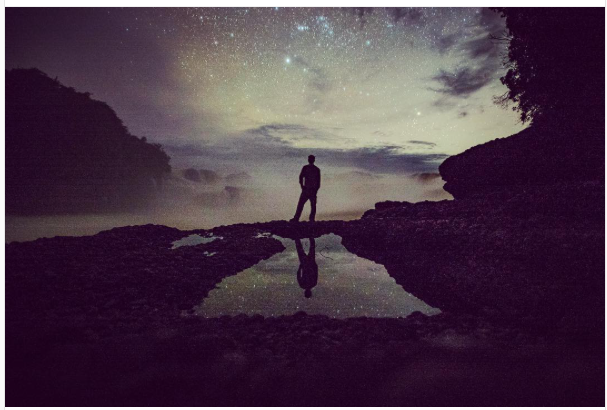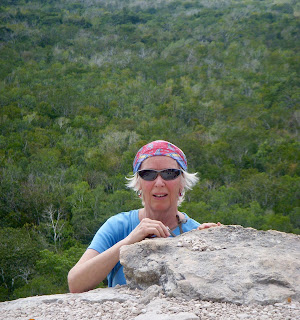Hardly a week goes by without someone asking about our son, Chris, 30, who's sort of a local celebrity with tales of his kayaking adventures often making their way online and into newspapers, magazines, films, and, occasionally, TV.
 |
| It hasn't been uncommon for photos such as this, documenting Chris enjoying waterfall moments around the world to show up on media. This was in Brazil. |
| So I wasn't surprised in a hardware store in Grants Pass, OR, when a man behind me at check-out inquired, "What's your son up to these days?" |
A store employee swung around and joined the conversation. "Yeah," she said. "Where's Chris?
I thought I'd have some fun with them.
"Oh, he's fine," I said.
"The FBI was at our house for three hours last week alerting us that he and four other kayakers had been held hostage by guerrillas on a river in the Amazon jungle. But no worries. They were released after a few days, and he's back in the USA."
I told the tale as if being held hostage by guerrillas in the jungle was no big deal, happens all the time.
Astonished looks all around.
"Sheesh!" blurted the clerk. "I'm sure glad he's not my son! How can you sleep at night?"
How many times have PK and I heard that?
I got a charge out of the stunned reactions. Now everyone within earshot was leaning in.
It was easy to be glib and milk the moment, but the actual day that the FBI showed up at our house, and the ensuing 24 hours—that was a different story.
For us it began Friday, April 21, 2017. (For Chris and the expedition team, it began April 18 when they first encountered their captors.)
I 'd left the house for a bike ride and saw PK talking in our driveway with two men in suits and a nattily dressed woman. I pegged them as purveyors of the Watchtower and prepared to bolt, head down, eyes averted.
"It's the FBI," Paul mouthed as I approached with my bike.
They'd already shown their IDs to PK and stated their purpose, but I was clueless.
The FBI? Is something going on in the neighborhood? I thought. It did not occur to me that their visit had to do with Chris .
We'd received a text message from Chris within the past few days, or had it been a FB post? Or was it four days ago? On Instagram? I lose track.
Whatever. His expedition team of five traveled with their best friend, a Garmin InReach satellite device, which enables them to send texts anywhere from anywhere. Hence, they're able to placate parents and other people who care with frequent communications. Almost daily communicating created a sense of security. False, it turns out.
 |
| One of few rapids on a 700-mile expedition, unlike previous expeditions that have been rife with roaring falls, canyons, and cataracts. |
In addition, through InReach, a friend in California was updating the team's location though the Amazon wilderness. The map link was available online to anyone interested. We'd seen it but weren't checking every day, so we were unaware that InReach reports had stopped
Just stopped. The screen had gone blank. Big trouble.
Well, isn't that the perfect definition of "ignorance is bliss"? We would have been emotional wrecks, had we been paying attention. But after enduring 10 years of our son doing seemingly impossible feats and taking unacceptable (to us) risks, we've become calloused to his living on the edge.
He's strong, smart, humble, skilled, and somehow happily enmeshed in a culture that puts him amongst an elite group of modern-day explorers and adventurers. He continues to amaze and delight us as we live his adventures vicariously.
 |
Not a photo a mom can enjoy. Chris on the first
descent of Toketee Falls on Oregon's North
Umpqua River in 2011.
|
I removed my bike helmet and PK and I and three FBI agents took seats in our living room. PK and I exchanged glances. What the hell's going on?
"It's about your son, Chris," said the lead agent, who introduced himself as a hostage negotiator.
Hostage negotiator?
The other male agent was an FBI special investigator, the woman was a victim specialist.
Victim specialist!
PK and I exchanged glances, and I know we're in the same boat, so to speak, of shock and disbelief. This can't be happening!
The reason for the FBI's visit unfolded.
Out of what the lead guy described as an "abundance of caution," we were told that Chris and his expedition team in Colombia's Amazon Basin appeared to have been detained by FARC, a rebel guerrilla group. FARC had been mostly disarmed in 2016, after 50+ years of conflict. But holdouts exist.
Some of the FARC holdouts were apparently holding hostage all five members of the expedition.
Chris told us the only time he was afraid, and planning an escape into the jungle with his GPS, was the night before they were to be released. He was in his hammock when Colombian military planes began flying over the encampment. The FARC went ballistic.
"They were running around, yelling, asking where is the GPS? Who has it?" Chris had hidden one on his body. The planes left. Things calmed down. The next morning, the team was released and paddled four miles downstream to catch a bush plane to a tiny airport in a tiny town. There, much to their amazement, they were met by representatives of the Colombian military and the FBI.
The greeting party was but a small contingent of the agents and agencies in Columbia and the USA interested in the case.
A brief account of the hostage situation is here: Outside Online - How 5 kayakers were taken hostage in the Amazon. It's a series of photos with longish captions outlining the basics of what happened. The photos, all but one by Chris, provide a sense of the ethereal Amazon. A more in-depth print article about the episode is in the works by the Men's Journal.
I don't want to repeat what you can read on Outside Online, but PK and I have some thoughts about the US government's response.
We are grateful.
We were impressed that three FBI agents came to our home, and others to the families of two other US citizens on the expedition. Chris' girlfriend, then in Hawaii, was also contacted by an FBI agent who offered assistance.
We learned that when US citizens are held against their will in foreign lands, it's a no-holds-barred commitment to get them out safely.
Impressive. Check it out here.
What was the FBI's purpose in visiting us?
Learn about Chris
They asked multiple questions about Chris, most designed to determine how he might handle being held hostage. Does he have medical issues? What kind of person is he? How does he handle stress? How might he react to being pressured?(tortured or threatened)
Admiring parents as we are, we described Chris as a "real nice guy." Humble, quiet, thoughtful, sensitive, intelligent, strong, and centered. Because of what he does for a living, we know that he's able to focus on the moment, shut out negative thoughts and maintain a calm center. We think he'd avoid stupid moves or emotional or angry displays.
Educate us about how to respond to ransom demands
And on it went, all the way through the mechanics of "how to get you your money,"to responding to threats that the hostage will be harmed or killed. I was beginning to disconnect.
The hostage negotiator said that if we got a ransom call, he would be moving into our house. As it was, he left us with a recording device should we receive a ransom call. If we were contacted by a captor, we were instructed to call the hostage negotiator any time, night or day.
We didn't have to. Thank you, Universe.
Instead, we learned the next day that the team had been released and flown by a US military plane based in Columbia to Bogota, site of the US Embassy. All were debriefed by FBI and Columbia officials, lodged in a hotel, provided meals and offered air transportation to anywhere they wanted to go. The US citizens were asked to stay three days to satisfy intelligence needs.
The 40-minute film is gut wrenching and beautiful at the same time. Hendri Coatzee was an extraordinary human being and a gifted writer. He wrote a book that was edited and published following his demise, Living the Best Day Ever.
Chris and Ben were being held by the dysfunctional Congolese government. It was making us crazy. That lasted about a week before they were flown out by the United Nations.
Bette and I kept talking. And later, for a few wonderful but heart-wrenching days, we were with Hendri Coatzee’s mom, Marie Nieman, when Ben’s film debuted at the Telluride Mountain Film Festival in 2011.
 |
| Started young. Won't quit until he must. Despite how much he sometimes scares us, gotta love him. But please, no more FBI visits. |
 |
| Plus we could stand a bit less of this type of action. |























